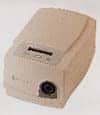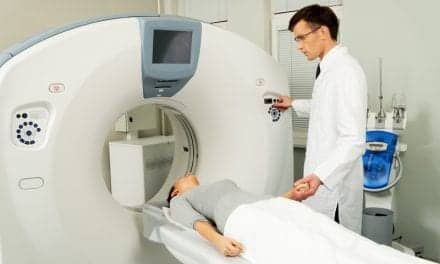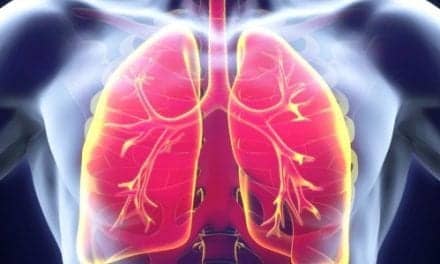Hyperbaric oxygenation has been used in diving for hundreds of years, but we now know that it has multiple medical applications, too
 Hyperbaric chamber, view into entrance
Hyperbaric chamber, view into entrance
Hyperbaric conditions prevail at pressures exceeding normal atmospheric pressures. A hyperbaric physician wrote, “The use of atmospheric air under different degrees of pressure, in the treatment of disease, is one of the most important advances in modern medicine and we are astonished that . . . this method of treatment has been so little used.”1 That was written in 1885, and there are those who would agree today. Others believe that hyperbaric therapy is a cure in search of a disease. Hyperbaric oxygen therapy (HBO) is currently used for a wide range of conditions, and, although it is closely associated with the treatment of decompression syndromes, those are among the least common indications for therapy. RTs are frequently involved in the operation of hyperbaric oxygen therapy centers.
History
Diving and hyperbaric medicine are closely linked. The first pressurized diving bell was invented in 1620, and medical hyperbaric technology was first described in the 1660s. In the mid 1800s, compression was found to relieve the joint pain and neuropathy experienced by mine workers and bridge builders, reducing the mortality rate of up to 25% that had applied to them before hyperbaric treatments were available.
Hyperbaric oxygen treatments were first used medically in 1937, but the equipment needed to handle the explosion potential safely was not developed until the 1950s and 1960s. At that time, successful hyperbaric treatments for cardiovascular disease, anaerobic infections, and carbon monoxide poisoning were reported. Of particular note during the 1960s was the experience of Peter Borema, MD, a Dutch physician who kept fully exsanguinated piglets alive in a hyperbaric oxygen environment at 3 atmospheres of pressure and published the results in a landmark work called Life Without Blood.2
Hyperbaric therapy languished until relatively recently, but there is now a respectable, defined hyperbaric medicine practice. There are more than 300 hyperbaric chambers in the United States, and many health-insurance plans now cover the therapy under approved conditions. The Undersea and Hyperbaric Medical Society is a recognized oversight body, and the American Board of Medical Specialties offers hyperbaric certification as a subspecialty of both emergency medicine and preventive medicine.
Physics
Pressures are described in atmospheres absolute (ATAs), the sum of atmospheric and hydrostatic pressures. One ATA is the atmospheric pressure at sea level, about 14.7 psi. Hyperbaric therapy applies the fundamental physical gas laws of Boyle, Henry, Dalton, and Charles. The Boyle law states that, at a constant temperature, the pressure and volume of a gas are inversely proportional. The Henry law describes the proportional relationship between the pressure of the gas over a solution and the solubility of the gas in that solution, if no other chemical reaction is present. The Dalton law describes how, in a mixed gas, each element exerts a pressure proportional to the fraction of each represented in the total volume. The Charles law states that the temperature and volume of a gas are inversely proportional. Accordingly, as pressure increases, the percentage of inspired oxygen will remain constant (the Dalton law), but the oxygen dissolved in solution will increase (the Henry law), while gas-bubble volume, if present, will decrease (the Boyle law). The Charles law explains the temperature changes associated with pressure increases and decreases in the chamber.
Hyperbaric oxygen therapy also requires an understanding of oxygen transport in the blood. Oxygen is carried through the circulation in two ways: bound to hemoglobin (Hb) in erythrocytes and dissolved in plasma. According to the Henry law, an increase in the dissolved pressure of oxygen created by hyperbaric conditions has little effect on total Hb oxygen content, but increases the amount of oxygen dissolved in plasma. At 1 ATA, Pao2 is about 90 mm Hg and tissue oxygen tension about 55 mm Hg. If the pressure is increased to 3 ATA, arteriolar oxygen tension is nearly 2000 mm Hg, tissue oxygen tension is at least 500 mm Hg, and the oxygen-carrying capacity of plasma alone is adequate to support tissue life.2
Carbon Monoxide Poisoning
Carbon monoxide is produced by the incomplete combustion of carbon-containing substances and by the metabolism of paints and solvents containing methylene chloride. Carbon monoxide poisoning results in about 40,000 emergency department admissions per year in the United States and is one of the leading causes of poisoning-related fatalities.
One of the primary adverse effects of carbon monoxide toxicity is hypoxia. Carbon monoxide binds to Hb with an affinity 240 times greater than that of oxygen, reducing tissue oxygen availability and creating a hypoxic state. Carbon monoxide binding also shifts the Hbo2 dissociation curve to the left, decreasing the dissociation of oxygen from Hb molecules into cells. In addition, carbon monoxide binds to cytochrome oxidase and interferes with cellular respiration, causes lipid peroxidation in the central nervous system, and predisposes patients to reperfusion injury.
Many patients with carbon monoxide toxicity experience cognitive changes lasting a month or longer, and about a third of those have persistent neurological dysfunction. The changes sometimes develop as long as a month after the exposure and may be unrelated to hypoxia.
Hyperbaric oxygen accelerates carbon monoxide’s dissociation from Hb. In a patient breathing room air, the half-life of carbon monoxide is 5.5 hours. In comparison, the half-life is 90 minutes in 100% oxygen at normal pressures and 23 minutes in a 100%-oxygen environment pressurized to 3 ATA. A large study3 demonstrated the benefit of hyperbaric oxygen therapy for patients with carbon monoxide exposure, even when their measured carbon monoxide levels at the time of the first treatment were at or near normal levels. The patients received three treatments in 24 hours and had better performance on cognitive and neuropsychiatric tests as long as a month after treatment. There are, however, authors4 whose results have not been similar.
- In general terms, current indications2-5 and patient-selection criteria for hyperbaric oxygen treatment for carbon monoxide toxicity are
- • coma;
• neurological impairment, including that demonstrated through neuropsychiatric testing;
• cardiovascular impairment;
• a serum Hbco level of more than 40%;
• a serum Hbco level of more than 15% in pregnancy;
• a serum Hbco level of more than 20% in ischemic heart disease;
• recurrent symptoms;
• symptoms refractory to 3 hours of therapy with normobaric 100% oxygen;
• any period of unconsciousness;
• persistent acidosis;
• headache on admission; and
• dizziness preceding admission.
Wound Healing
Hyperbaric oxygen is a proven adjunctive therapy for treating problem wounds, where the underlying pathologies are tissue hypoxia, infection, and deficient healing responses. Tissue-fluid oxygen tensions of about 40 mm Hg are necessary to the fibroblast function, angiogenesis, and neutrophil activity needed for wound healing, and collagen synthesis is oxygen dependent. In problem wounds, large intercapillary distances create the need for oxygen to travel by diffusion (as opposed to Hb carriage). A high oxygen gradient, therefore, promotes angiogenesis, enhances leukocyte function, increases neutrophil effectiveness, and reduces edema.
To be amenable to improvement through hyperbaric oxygen therapy, the affected area must have intact perfusion. Generally, 15 to 30 daily treatments are required before granulation tissue forms; thereafter, tissue oxygen tensions in room air are high enough to foster continued tissue growth.
Necrotizing anaerobic infections have some characteristics in common with problem wounds. Anaerobic bacteria multiply freely in tissues with low oxygen tension and have restricted growth as oxygen tension increases. Hyperbaric oxygen, then, is bacteriostatic in infected tissue, in addition to optimizing the growth of healthy tissue. The literature6,7 shows reduced mortality with hyperbaric therapy for gangrene and necrotizing infections, as well as decreased numbers of debridement surgeries. Patients with necrotizing infections require treatment every 8 hours for the first 1 to 2 days of therapy; this is followed by treatment twice daily for the next 3 to 5 days.
Complications and Safety
The few absolute contraindications to hyperbaric oxygen therapy are primarily untreated pneumothorax and the use of therapeutic agents that have potentially toxic effects in the hyperbaric environment, such as cisplatin, bleomycin, disulfram, and mafenide acetate. High fever, a low seizure threshold, emphysema, upper respiratory infection, otitis media, and acute chronic sinusitis are relative contraindications. Hyperbaric oxygen is not detrimental to the fetus, and therapy is not contraindicated in pregnancy.
The most common side effects of hyperbaric therapy are middle ear barotraumas, sinus pain, and claustrophobia. Oxygen toxicity is rare, but can lead to pulmonary and neurological complications. Neurological toxicity (the Bert effect) manifests itself as seizures, but permanent neurological sequelae in humans have not been reported. Pulmonary oxygen toxicity (the Smith effect) is diffuse lung damage due to oxygen exposure. Even normobaric oxygen is toxic, causing tracheitis in healthy volunteers within 6 hours and vital-capacity changes within 24 hours. The symptoms of pulmonary toxicity are substernal burning, slight cough, and mild dyspnea, but pulmonary toxicity is rare in hyperbaric oxygen therapy because the protocols (treatment tables) have been well designed.
Patients who undergo more than 20 daily hyperbaric oxygen treatments may develop lenticular visual changes and myopia that reverses with the cessation of treatment. Undergoing more than 150 hyperbaric oxygen treatments, however, increases the risks of irreversible vision changes and cataract development.
Hyperbaric chambers can accommodate a single patient (in a monoplace chamber) or several (in a multiplace chamber). In a monoplace chamber, the patient is in the chamber alone and the entire chamber is pressurized with 100% oxygen. In a multiplace chamber, an attendant is generally present with the patients. The patients breathe supplemental oxygen through masks or hoods and the attendant breathes the pressurized room air in the chamber. This decreases the attendant’s risk of adverse effects. Monoplace chambers are less expensive to operate, but larger chambers allow treatment of several patients simultaneously (and the presence of a medical attendant with critically ill patients). There are no reported outcomes differences between the two chamber types.
Conclusion
Hyperbaric oxygen therapy is a safe, recognized treatment that improves outcomes in a number of nondiving conditions. RTs, as experts in oxygen therapy and gas-law management, are commonly involved in hyperbaric programs.
Michael A. Frakes, APRN, CCNS, CFRN, CCRN, EMTP, is a senior flight nurse and the practice and research coordinator for LIFE STAR/Hartford Hospital, Hartford, Conn. Tracy Evans, RN, MPH, ACNP, EMTP, is trauma program manager and director of emergency medical services, Norwalk Hospital, Norwalk, Conn.
References
1. William CT. Lectures on the compressed air bath and its uses in the treatment of disease. Br Med J. 1885;1:824-936.
2. Sheridan RL, Shank ES. Hyperbaric oxygen treatment: a brief overview. J Trauma. 1999;47:426-435.
3. Weaver LK, Hopkins RO, Chan KJ, et al. Hyperbaric oxygen for acute carbon monoxide poisoning. New Engl J Med. 2002;347:1057-1067.
4. Scheinkestel CD, Bailey M, Myles PS, et al. Hyperbaric or normobaric oxygen for acute carbon monoxide poisoning. Med J Aust. 1999;170:203-210.
5. Annane D, Chevret S, Jars-Guincestre C, et al. Prognostic factors in unintentional mild carbon monoxide poisoning. Intensive Care Med. 2001;27:1776-1781.
6. Wang C, Schwaitzberg S, Berliner E, Zarin DA, Lau J. Hyperbaric oxygen for treating wounds. Arch Surg. 2003;138:272-279.
7. Zamboni WA, Browder LK, Martinez J. Hyperbaric oxygen and wound healing. Clin Plast Surg. 2000;30:67-75.









